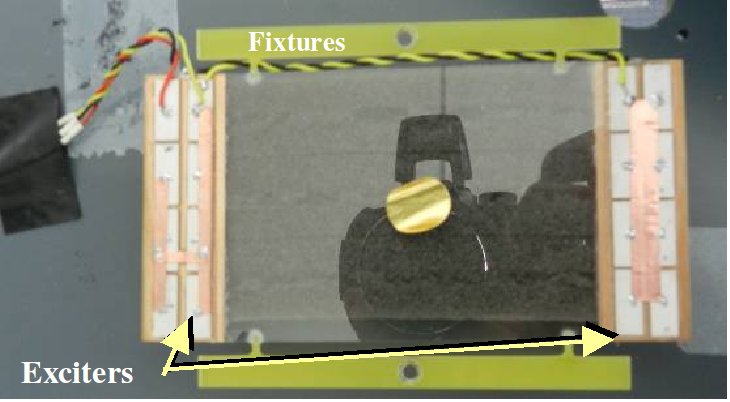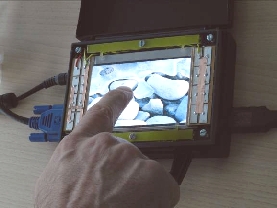Section: New Results
Design of transparent tactile stimulators
Participants : Michel Amberg, Frédéric Giraud, Betty Lemaire-Semail [correspondant] .
Friction reduction based tactile devices are able to modulate the friction between the fingertip and the active touched surface as a function of fingertip's position. This type of tactile stimulator is thus based on two main components: an active area which vibrates and produces a squeezed air film bearing and a position sensor. Our previous design was made up with a copper plate fully covered by piezo cells, a material which bent when energized by a voltage.
However, this design no longer makes sense when we look forward using tactile feedback on a transparent display. Indeed, for co-localized operation, we can't place piezo cells on the bottom surface of a touch screen since the touched surface would not be transparent; moreover, glass is a non conductive material which complicates the electrical connection.
To cope with these problems, a new design has been introduced. Two copper exciters are firmly bonded on the touch screen to obtain the vibration. These exciters vibrate and propagate their vibration to the glass touch screen. To be efficient, the size of the exciters has to be perfectly adapted to the glass plate. This is why, we not only propose a new way to obtain the vibration of the active area, but we also provide the key design rules of the exciters[19] .




